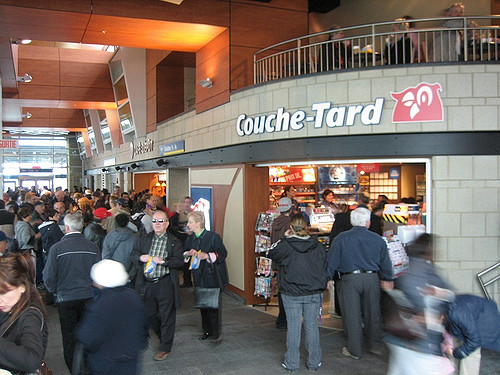Many have fallen victim to the emergence of e-commerce and the threat it unquestionably poses to the traditional “brick-and-mortar” retail model.
However, Alimentation Couche-Tard Inc. (TSX:ATD.B) can’t be viewed as anything less than the exception to that rule.
While retailers like Sears Holdings Corp., J C Penney Company Inc., and Macy’s Inc. have been forced to rationalize their store base, closing retail outlets en masse, Couche-Tard has been doing quite the opposite, expanding operations and gobbling up the competition.
Between 2010 and 2017, Canada’s leading convenience store chain has more than doubled its sales from $16.4 billion at the start of the decade to a little more than $37.7 billion by the finish of last year.
And on the back of that impressive top-line growth, the company has managed to more than quadruple its net profits from $530 million in 2010 to $2.12 billion in 2017.
The company has been spending aggressively on acquisitions over the past six years with the latest deal being the acquisition of Holiday Stationstores late in 2017 for $1.6 billion.
The Holiday convenience store chain is a mainstay in the U.S. Midwest region, and with the deal, Couche-Tard will get 516 new stores — 143 of which are managed by franchisees.
While some of those franchised locations may end up being converted to company-owned outlets, one thing that is more certain is that Couche-Tard expects to realize cost synergies of between $50 and $60 million over the next two to four years.
Meanwhile, the company is already on track to its goal of realizing $215 million in synergies as a result of integration of the ESSO and CST brands, having announced this spring that it has already achieved a $103 million run rate of savings just nine months after closing those acquisitions.
In announcing its third-quarter results earlier this year in March, Couche-Tard’s chief financial officer Claude Tessier also pointed to the company’s “continued push towards integration, digitalization, and mobilization of advanced technology to bring even more efficiencies to our operations.”
And there you have the company’s strategy in a nutshell.
Couche-Tard feels that it can gain an edge on the competition, smaller mom-and-pop convenience stores, by taking advantage of its massive scale advantage.
Couche-Tard is in the enviable position of being able to spread fixed costs; for example, the technology it uses to manage its inventory and supply chain is used in its more than 2,500 stores across North America, not to mention another 1,450 in Europe.
When you add the inherent advantage in being able to secure purchase discounts for a store network of that magnitude, it’s easy to see how it can become very difficult for smaller competitors to keep up.
Bottom line
Couche-Tard shares have risen more than 10-fold since 2010; however, thanks to some recent weakness since the beginning of the year, shares are a little off their 52-week lows.
More recently, shares are up about 6% in June. It would not be out of the realm of possibility at all to see the latest surge continue, leading a recovery in the stock’s price back toward its 52-week high, or about 16% north of where the shares were entering Thursday’s trading.
Stay Foolish.








